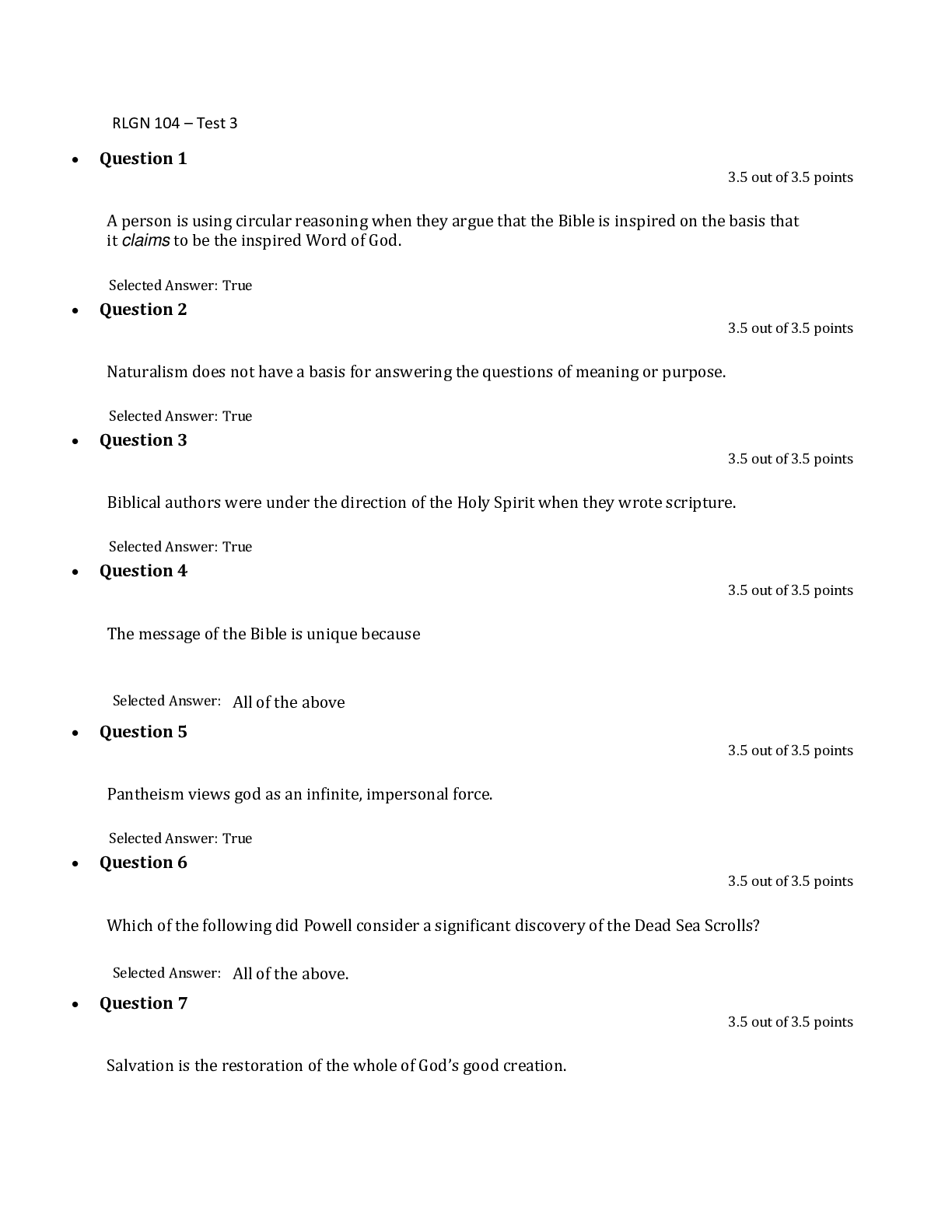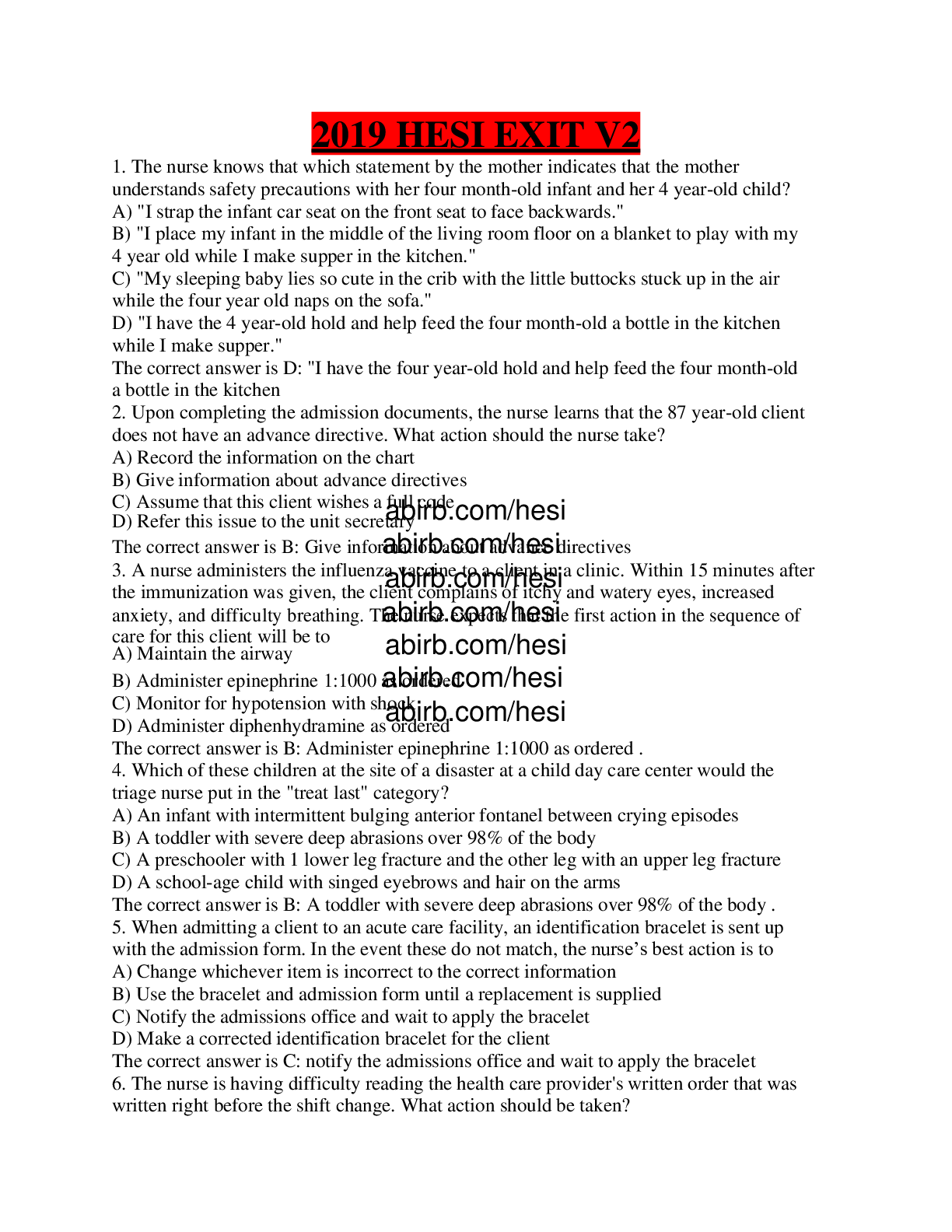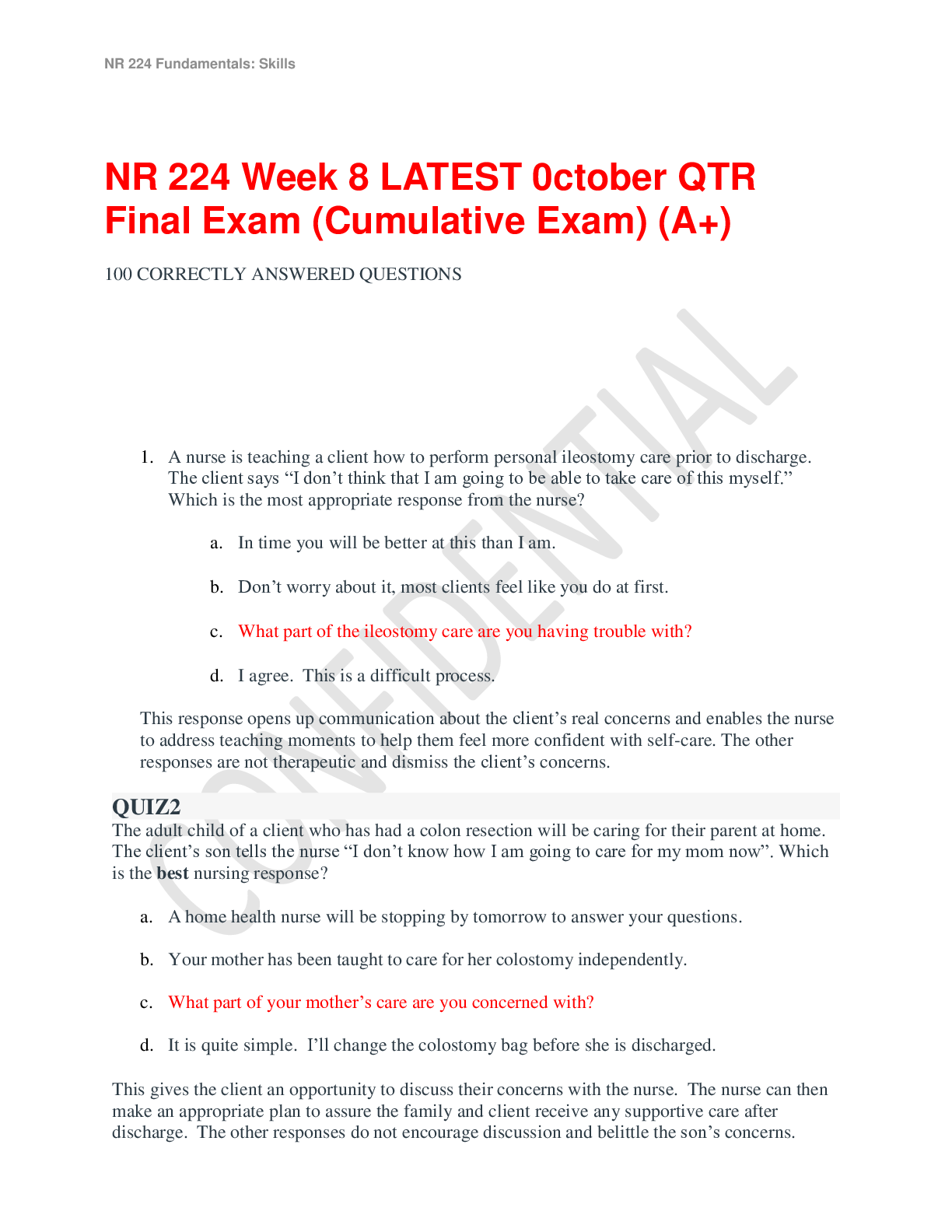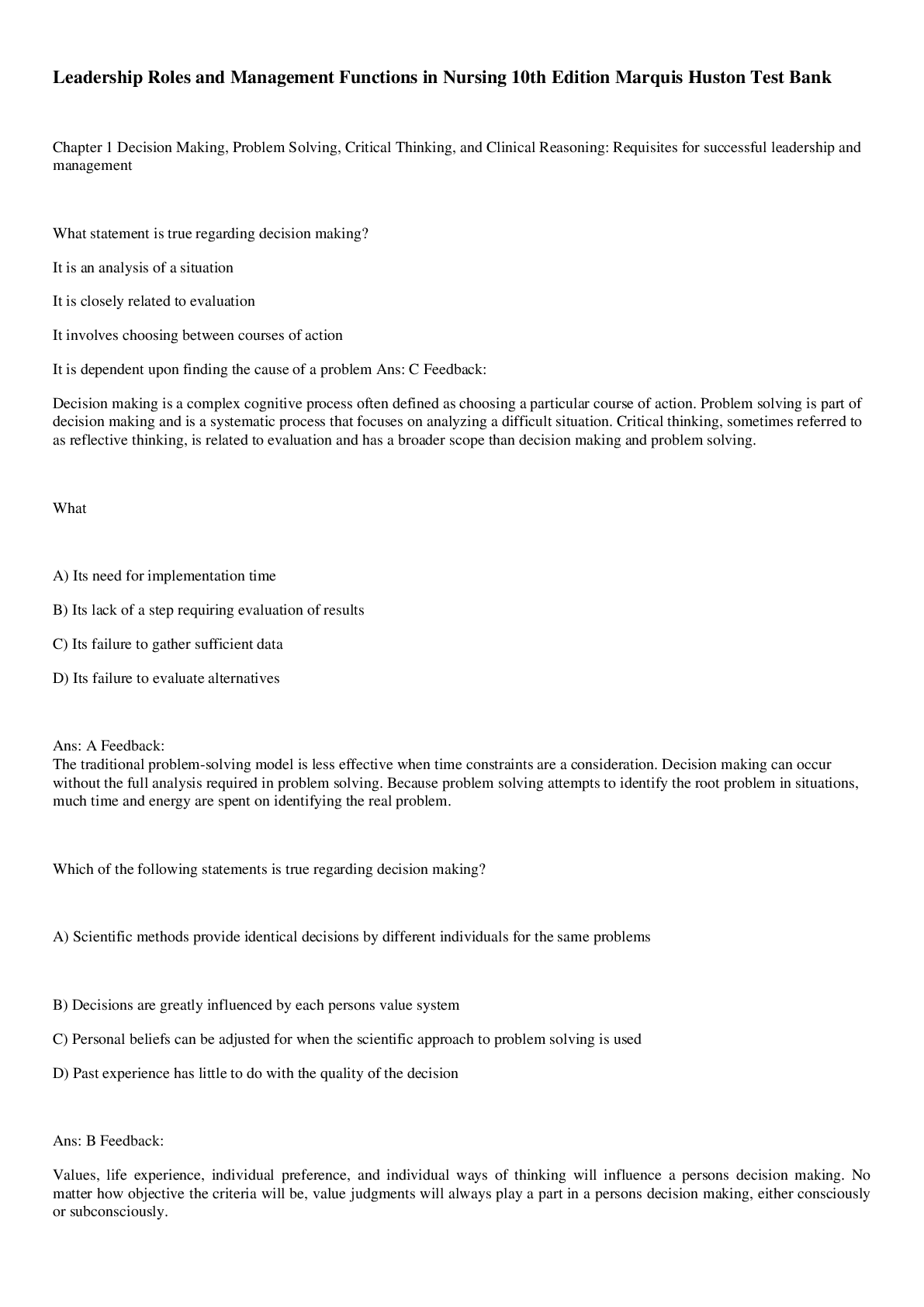Mathematics > QUESTIONS & ANSWERS > EEE-III-ELECTRICAL AND ELECTRONICMEASUREMENTS AND INSTRUME [10EE35]-NOTES (All)
EEE-III-ELECTRICAL AND ELECTRONICMEASUREMENTS AND INSTRUME [10EE35]-NOTES
Document Content and Description Below
Table of Contents Sl.No Chapters Page no 1 Unit 1A: SI units 4 to 10 2 Unit 2: Measurements of resistance Wheat stone bridge, kelvins double bridge sensitivitey 3 Unit-2: Measurement of Induct... ance and capacitance 11 to 14 Sources and detectors Maxwell’s indiuctance bridge Desauty’s bridge Scehering bridge 4 Unit-3:Extension of Instrument ranges 15 to 21 Introduction Shunts and multipliers CT & PT Ratio and phase angle erros 5 Unit-4 measurement of power and energy 22 to 26 Dynamometer type wattmenter UPF and LPF wattmetres Construction theory Errors and adjustments 6 Unit-5: Construction and operation 27 to 41 Electrodynamometer type wattmeter Power factor meter Electronic Instruments , True RMS responding voltmeter, electronic multimters 7 Unit 6 : Dual Trace Oscilloscope: 42 to 54 Front panel details Measurement of voltage and current , frequency and period Lissajous Patterns Working of digital storage oscilloscope Current probes 8 Unit 7: Transducers 55 to 63 Classifications and se;lection of transducers, Strain gauges, LVDT Photoconductive and photovoltaic cells 9 Unit 8: Interfacing 64 to 81 Interfacing and resistive circuits, Display devices and signal generators X-y recorders, LED display, function generators Electrical and Electronic Measurements& Instrumentation 10EE35 Department of EEE, SJBIT Page 4 Unit 1 Units & Dimensions 1 Units To specify and perform calculations with physical quantities , the physical quantities must be defined both in time and magnitude. The std. measure of each type of physical quantitity to be measured is called unit. Mathematically the procedure of measurement can be expressed as Magnitude of measurand = numerical ratio * unit Where numerical ratio = number of times the unit occurs in any given amount of same quantity. Hence it is also called no. of measures . it is also called numerical multiplier. Hence, process of measurement is to find numerical ratio. The numerical ratio has no physical meaning without the unit. Ex: If we say the weight of 5kg means well defined weight is one kg and 5 such units are there in the measured weight. Thus, the numerical ratio is 5/1 while the unit is kg. 1.1 Fundamental Units The units which are independently chosen and not dependent on any other units are called fundamental units. These are also called base units. The length, mass and time are fundamental to most of the physical quantities. Hence the units which are the measures of length, mass and time are called primary fundamental units. Ex : m, kg, s The measures of certain physical quantitative related to numerical, therma, illumination etc. are called auxiliary fundamental units. Ex: k, candela , ampere 1.2 Derived Units All the units which are expressed in terms of the fundamental units using the physical equations are called derived Units. Ex: Area of rectangle = l * b Each of l & b is measured in m. Thus the product becomes m * m = m2. Hence the new unit which is derived as sq. m. for expressing the area is called derived units 2. Dimensions Every physical quantity has its own identity. Such an identity is nothing but its quality with which it can be distinguished from all the other quantities . Such a unique quality possessed by a quantity is called its dimension. Symbolically, the dimension is expressed in the characteristic notation which is [] Electrical and Electronic Measurements& Instrumentation 10EE35 Department of EEE, SJBIT Page 5 For Ex: the dimension of length is expressed as [L], the dimension of mass is [M]. The dimension of time is [T]. Similar to fundamental unit , each derived unit also has a unique dimension associated with it. Ex: The volume , V = l * b* h where the dimension of each l, b and h is [L]. Hence the equation is dimensional form becomes, V = [L][L][L] V = [L3] Any constants existing in the equations are always dimensionless. Thus, it can be said the complete algebraic formula to obtain the derived unit from the fundamental units is nothing but the dimension of the derived unit. Thus the equality in terms of dimensions and should not be mixed up with actual numerical values [Show More]
Last updated: 1 year ago
Preview 1 out of 81 pages
Instant download

Buy this document to get the full access instantly
Instant Download Access after purchase
Add to cartInstant download
Reviews( 0 )
Document information
Connected school, study & course
About the document
Uploaded On
Sep 22, 2021
Number of pages
81
Written in
Additional information
This document has been written for:
Uploaded
Sep 22, 2021
Downloads
0
Views
38






.png)






